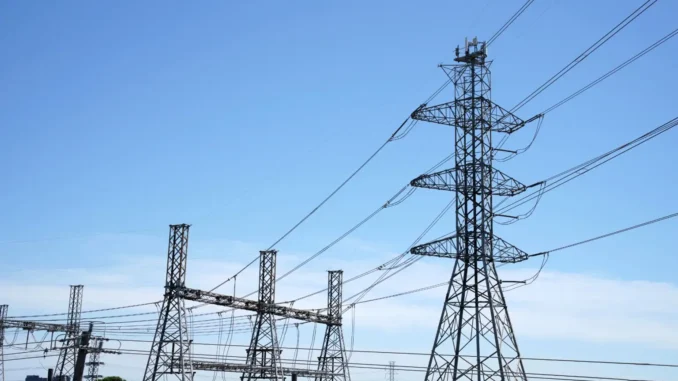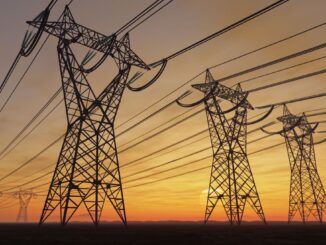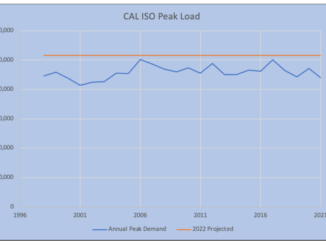
Summer’s coming. That means sunshine, swimming, cookouts — and blackouts.
That’s the warning from the North American Electric Reliability Corporation.
According to NERC, at least two-thirds of the country is at risk for major power outages this summer.
This extends to most everyone west of the Mississippi except for Texas.
Texas and much of the Midwest will be fine, the report says, so long as we don’t experience hot, windless summer days.
Well, that’s a relief. When do we ever get hot, windless summer days in Texas and the Midwest?
Part of the problem is the steady removal of fossil-fuel plants from the grid.
These plants are supposed to be replaced by renewables — wind and solar — but wind doesn’t work on windless days, and solar doesn’t keep your air conditioning running on steamy nights.
The Wall Street Journal reports the Environmental Protection Agency has made things worse with new nitrogen-oxides rules from its recently finalized “Good Neighbor Plan, which requires fossil-fuel power plants in 22 states to reduce NOx emissions. NERC predicts power plants will comply by limiting hours of operation but warns they may need regulatory waivers in the event of a power crunch.”
The Journal notes, “The EPA claimed the rule wouldn’t jeopardize grid reliability, but then why would power plants need waivers to prevent blackouts?”
Why indeed?
There are other technical problems, too: Faulty solar inverters are in widespread use, and these can fail and make grid problems worse.
The Journal’s advice: Buy an emergency generator while stores still have them; don’t wait until later this summer when everyone will want one. (Done!)
We had a warm-up (chill-down?) for this crisis last winter, when many places experienced rolling blackouts due to inadequate power supplies in the face of cold temperatures that were not, in fact, unusually cold.
My own area in Knoxville, Tenn., saw temperatures in the single digits, which are not that unusual but which power-company hacks called “unprecedented.”
Knoxville’s lowest temperature was 24 below, back in 1985, and they managed to keep the lights on for that.
But that was before the Tennessee Valley Authority started shutting down coal, nuclear and gas plants.

What used to be one of the nation’s best areas for cheap abundant power — that’s why much of the Manhattan Project was located nearby — now faces rolling blackouts because the weather is chilly.
But it wasn’t just TVA. Duke Energy apologized to its customers for rolling blackouts, too.
It was a problem across a wide area amid temperatures that, while chilly, were really nothing so bad as to justify widespread shutdowns.
New York is not looking great, as state regulations are forcing gas and oil “peaker” plants — quick-start power plants that can help meet peak demand in a crisis — offline.
Utilities that can’t meet peak demand have to engage in “load-shedding” via rolling blackouts or face total collapse. That just got harder.
Why is all this happening now?
The short answer is the people running things care more about green politics than they care about the quality of life of the people they’re supposed to be serving.
A sensible regulatory system would put grid reliability at the top of the priority list.
When power goes out, people’s lives are disrupted, the old and sick are put at risk (in the heat and especially in the cold), businesses have to shut down and lose money, workers forgo pay, and the entire atmosphere shifts closer to that of a decrepit Third World nation.
If you cared about both the planet and the people, you wouldn’t take power plants offline until you’d put enough new capacity online to replace them and meet projected additional demand.
And you wouldn’t make unreliable technologies like wind and solar, which tend to fail when they’re most needed, the mainstay of your generating scheme.

To its credit, TVA, at least, is working to build more nuclear plants, which are both carbon-free and highly reliable, to bolster its capacity.
But I doubt we’ll see that in New York or California any time soon — though many European nations recognize nuclear as a greenhouse-friendly source of power. (And one we’ll need even more if the government’s plan to replace most vehicles with electrics goes forward.)
But we’re not seeing sensible, people-friendly energy policies in very many places across America.
That’s because we don’t have sensible, people-friendly leadership.
In fact, if the people running things wanted to make ordinary Americans’ lives worse, what would they be doing differently?
As you ponder that question, consider buying a generator. I did.



